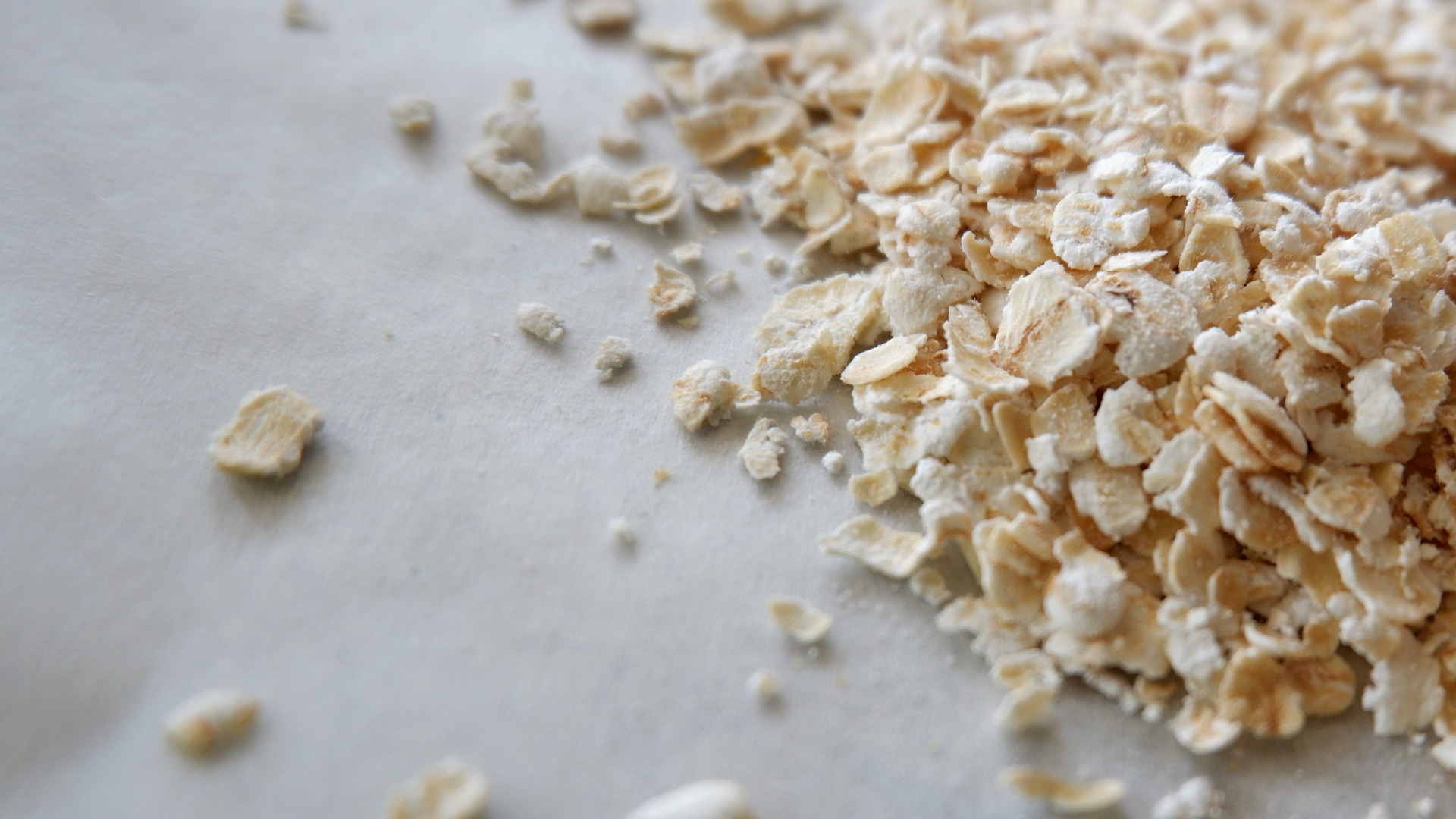 Oats are considered a healthy food. They are high in fibre and contain good levels of vitamins and minerals. The health effects of oats derive partly from the fact that the oats are usually eaten in their whole food form, after simply being rolled to open the seed coat. The caryopsis of oats (the caryopsis refers to the whole oat grain) contains about 10 % oil of which about 2 to 10 % is in the form of free fatty acids, mainly oleic acid, the rest as triglycerides. The rolling of oats causes the release of the digestive enzyme lipase from the cells and this can then act on the triglycerides in the oats to cause their breakdown to free fatty acids and glycerol. High water content of the oats and a higher temperature can accelerate this degradation of the triglycerides. It has been estimated that storage of oatmeal at 4 % water content can cause minimal degradation of the triglycerides in the oats. However increasing the water content to 30 to 40 % can accelerate the degradation causing breakdown of the triglycerides by lipase in just a few hours.
Oats are considered a healthy food. They are high in fibre and contain good levels of vitamins and minerals. The health effects of oats derive partly from the fact that the oats are usually eaten in their whole food form, after simply being rolled to open the seed coat. The caryopsis of oats (the caryopsis refers to the whole oat grain) contains about 10 % oil of which about 2 to 10 % is in the form of free fatty acids, mainly oleic acid, the rest as triglycerides. The rolling of oats causes the release of the digestive enzyme lipase from the cells and this can then act on the triglycerides in the oats to cause their breakdown to free fatty acids and glycerol. High water content of the oats and a higher temperature can accelerate this degradation of the triglycerides. It has been estimated that storage of oatmeal at 4 % water content can cause minimal degradation of the triglycerides in the oats. However increasing the water content to 30 to 40 % can accelerate the degradation causing breakdown of the triglycerides by lipase in just a few hours.

Oats are a healthy food that can significantly reduce the risk of a number of Western lifestyle diseases when consumed regularly. Oats have a long shelf life when stored with a low moisture content. However as the moisture content rises the shelf life decreases considerably due to the release of degradation enzymes such as lipases.
The main problem with the conversion of triglycerides to free fatty acids, is that the taste of the oats can change, and this leads to spoilage. Maintaining the oats in their original chemical form is preferable as this elongates the shelf life of the oats and prevents waste. Dry stored oats therefore have a much longer shelf life that oatmeal dough and its products, based on water content. Manufacturers of oatmeal products can however elongate the shelf life of oats meal dough products by degrading the lipase content before it has a chance to act of the triglycerides. This is usually achieved through the addition of heat to the oats, a process that denatures the lipase enzyme before it has a chance to act on the triglycerides. Oats present in products such as oat cakes, biscuits and flapjacks are therefore usually more processed in comparison to dried oatmeal. Homemade oatmeal products do not require heat treatment to destroy the lipase as they tend to be consumed within a short time frame and shelf life is not a concern.
Eat Well, Stay Healthy, Protect Yourself
RdB
